
Most of us learned to eat three times a day, at breakfast, lunch and dinner. A new school of thought has emerged purporting that eating five or six small meals during the day instead of three large ones can be a healthier, more balanced way to eat, and it can help with weight control. If this is a plan you'd like to try, learn to create balanced meals that contain the appropriate amounts of protein, carbohydrate and fiber.
More and Smaller Meals
Each time you eat, your pancreas secretes insulin to compensate for your rising blood-glucose level, which removes the sugar from the bloodstream and moves it into your cells. This causes glucose levels and insulin levels to decrease. By eating two or three large meals each day, blood sugar and insulin levels experience dramatic highs and lows, and can even result in hypoglycemia, which occurs when your blood sugar drops to dangerously low levels. Eating several smaller meals throughout the day will keep blood glucose at a more consistent level throughout the day. These meals should contain protein, fiber, carbohydrates and fats, particularly the "good" fats, such as Omega-3 fatty acids. To come up with a meal plan, first you need to determine the optimal number of calories you need to take in each day. These vary according to several factors, but are typically determined by age and activity level. For example, a highly active teenager would require about 2,400 calories a day, while a sedentary person over 50 would only need 1,600 calories per day. Such a five-meal plan still revolves around the three main meals, but with healthy snacks in between, and portions adjusted accordingly.
Breakfast
Because you are literally "breaking the fast" since your last meal the night before, breakfast should be the largest meal of the day. It should provide a healthy balance of nutrients. Some breakfast ideas include scrambled eggs and vegetables wrapped in a whole-wheat tortilla and topped with a drizzle of creamy fat-free ranch dressing, whole-grain cereal with skim milk topped with yogurt and sliced fruit, or even a piece of whole-grain toast topped with peanut butter and sliced banana.
Lunch
Lunch should consist of a combination of protein, carbohydrate and fiber. Protein is particularly important, because your body cannot conserve stores of protein to draw from later, as it does with fat. Some healthy lunch options include a sandwich or wrap containing sliced chicken or deli meat along with leafy greens or sprouts, a garden salad tossed with creamy fat-free dressing and grilled chicken or shrimp, or baked corn chips accompanied by homemade salsa and avacado guacamole. A serving of fresh fruit is always a good choice to complete lunch, such as some grapes, or an apple, pear, banana or peach.
Dinner
Dinner should ideally include a salad with fat-free dressing or plenty of vegetables, a rich source of protein, and some whole grains. Wild rice is an excellent whole-grain side dish, as it's high in the amino acid lysine, as well as in protein and dietary fiber. The main protein of the meal can come from meat, poultry, fish or even tofu. Skinless chicken breasts are a healthy choice, and fish such as salmon and tuna are loaded with beneficial Omega-3 fatty acids. For desserts, try to work in fresh fruit whenever possible, such as fresh strawberries as a topping for frozen yogurt.
Snacks
A meal plan involving five smaller meals per day includes a snack between breakfast and lunch, and another between lunch and dinner. Ideas for snacks include strawberries with marscapone cheese, yogurt with diced cantaloupe, a whole-grain granola bar and some dried fruit, or raw vegetables such as cucumber spears, carrot sticks, and broccoli florets with a light ranch dressing as a dip.
Related Articles
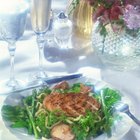
High Fiber & Protein Diet Menus
When to Eat & Exercise With P90X
How Many Calories Are for Breakfast, ...

2500 Calorie Menu
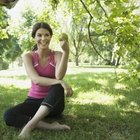
Low Calorie High Energy Foods
Snacks Compatible With a Diet for Gout

Nutrition Information on Blueberries

How to Get Fit in 4 Weeks
Calories in a Cucumber and Avocado Roll

How Much Vegetables Per Day Can I Have ...
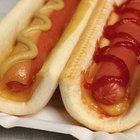
Kaiser Hotdog Diet
The Calories in Seafood Paella

A List of Foods That Contain Choline
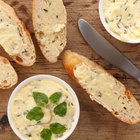
Buttered Toast & Bodybuilding
Low-Potassium Meals

Protein & Carbohydrates in Breakfast
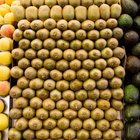
Fruit & Vegetable Fast Menu
Low-Protein Breakfast Menu

Menu for a Calorie-Restricted Diet

The Harcombe Diet Food List
References
Photo Credits
BananaStock/BananaStock/Getty Images